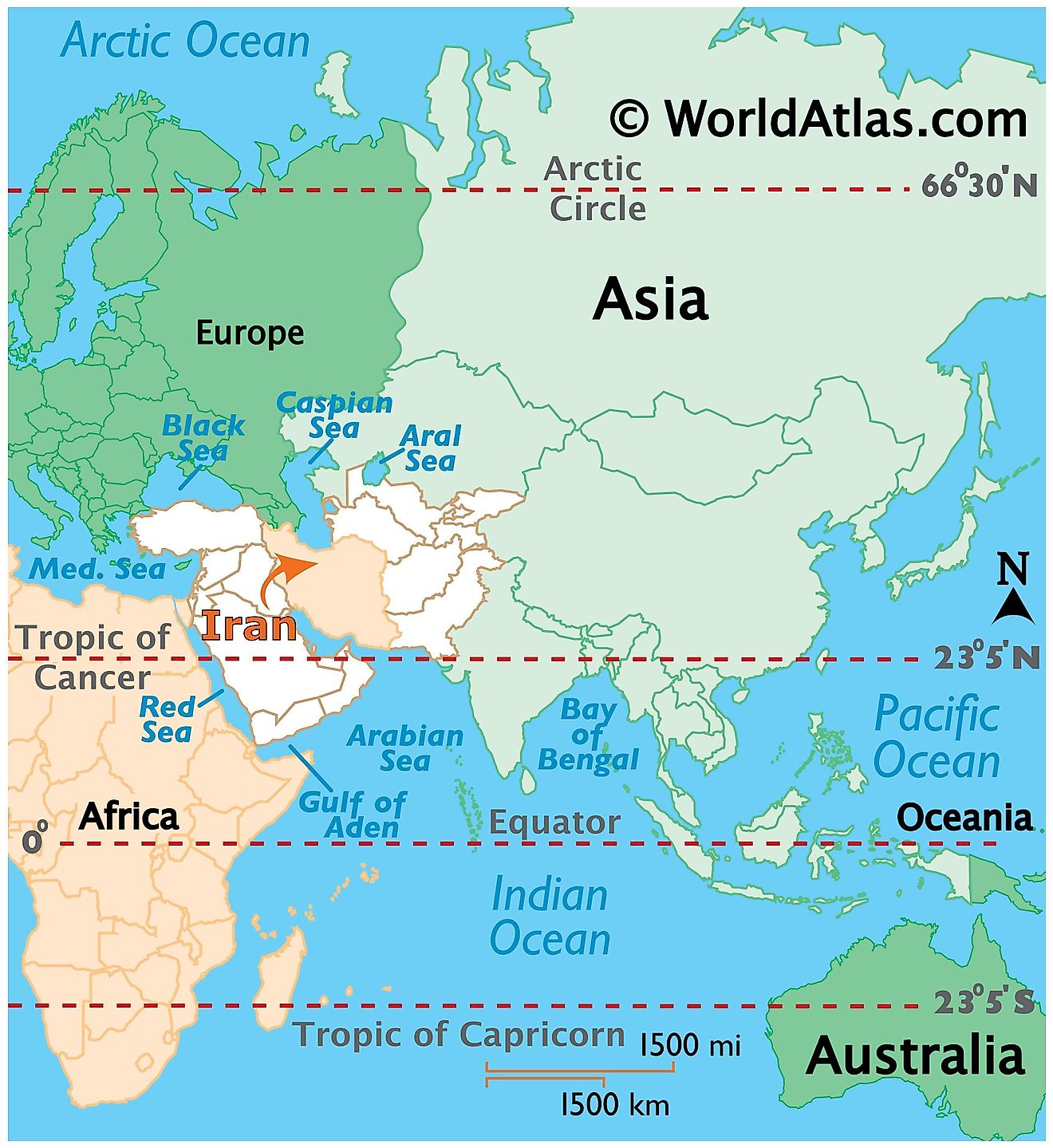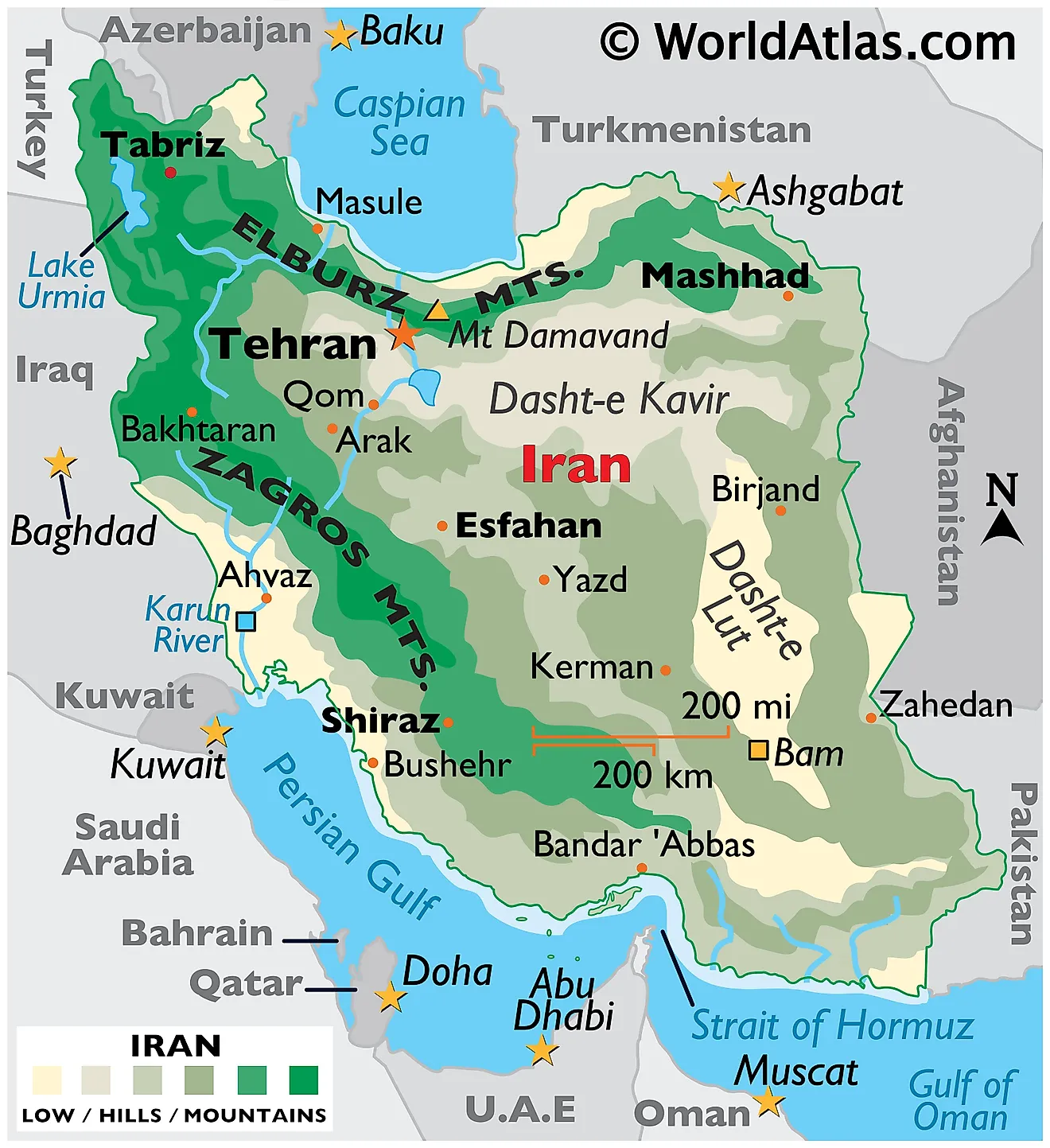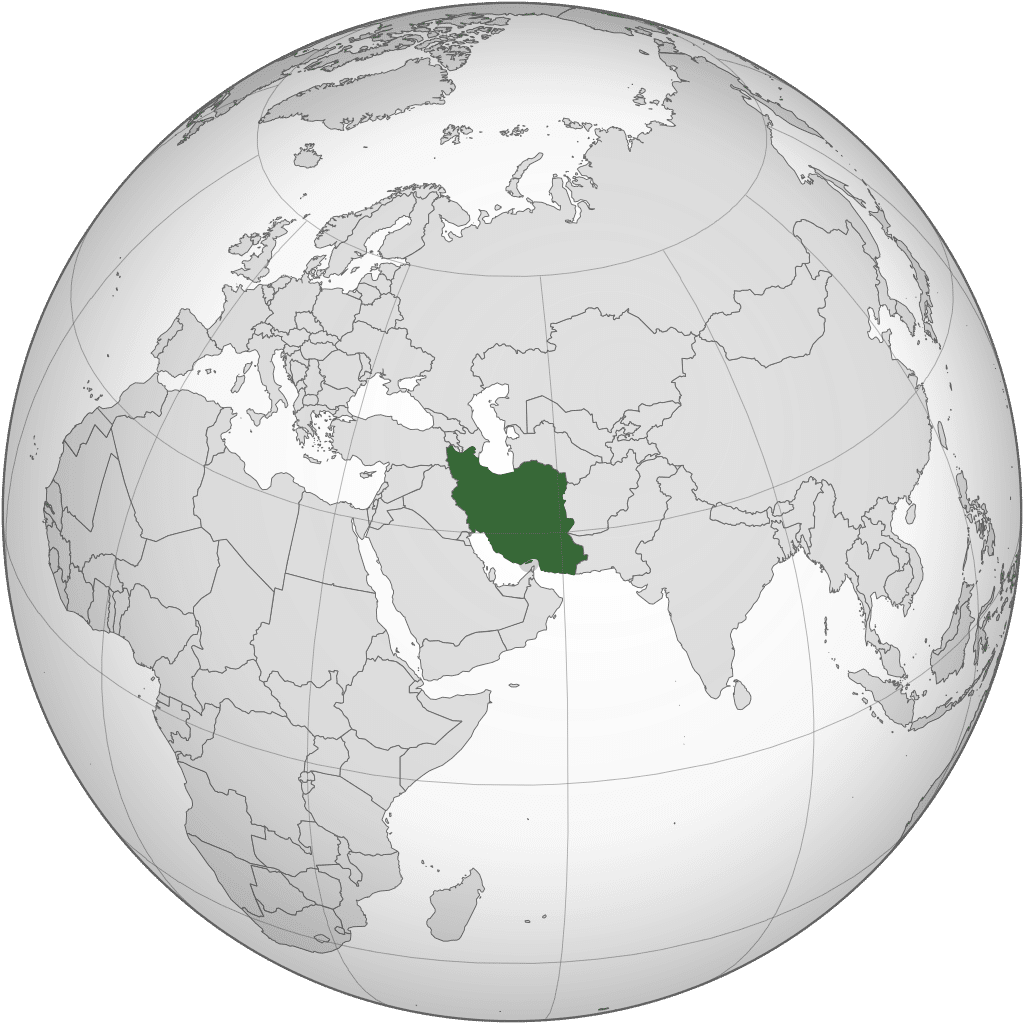Navigating ESTA And Iran: Your Guide To US Travel Eligibility
Dreaming of a trip to the United States? For many travelers from Visa Waiver Program (VWP) countries, the Electronic System for Travel Authorization, or ESTA, is the convenient and straightforward path to entry. It allows eligible citizens to visit the U.S. for tourism or business for up to 90 days without needing a traditional visa. However, the landscape of international travel regulations is dynamic, and for individuals with a history of travel to or connections with certain countries, including Iran, the ESTA application process can become significantly more complex. Understanding these nuances is crucial to ensure a smooth journey and avoid unexpected issues at the border.
The relationship between ESTA eligibility and any past or present ties to Iran is a frequent point of confusion and concern for many prospective travelers. Since specific changes were implemented in 2016, the rules have become stricter, impacting a significant number of individuals who might otherwise qualify for visa-free travel. This comprehensive guide aims to demystify the "ESTA Iran" connection, providing clear, actionable information based on official U.S. Customs and Border Protection (CBP) guidelines and real-world scenarios. We'll delve into the specific criteria, explore the reasons behind these restrictions, and outline alternative pathways for those who find themselves ineligible for an ESTA due to their association with Iran.
Table of Contents
- Understanding ESTA: Your Gateway to the USA
- The "ESTA Iran" Conundrum: Why It's Complex
- Navigating Alternatives: When ESTA Isn't an Option
- Why These Restrictions? The Geopolitical Context
- Ensuring a Smooth US Travel Experience
- Frequently Asked Questions about ESTA and Iran
Understanding ESTA: Your Gateway to the USA
The Electronic System for Travel Authorization (ESTA) is an automated system used by the U.S. government to determine the eligibility of visitors to travel to the United States under the Visa Waiver Program (VWP). The VWP allows citizens of certain countries to travel to the U.S. for tourism or business for stays of 90 days or less without obtaining a visa. It's a fantastic convenience, streamlining the entry process for millions of travelers annually. However, it's not an automatic right, and approval is granted by U.S. Customs and Border Protection (CBP) based on a series of eligibility questions.
Before boarding a U.S.-bound air or sea carrier, all eligible travelers must have valid ESTA approval. The application is submitted online via the official ESTA application website, U.S., where applicants provide biographical information, passport details, and answer a series of eligibility questions related to their background, health, criminal history, and travel history. While generally straightforward for most VWP citizens, specific questions, particularly those concerning travel to certain countries, can flag an application for further scrutiny or outright denial, leading us directly to the complexities involving ESTA Iran.
The "ESTA Iran" Conundrum: Why It's Complex
The specific challenges related to ESTA Iran eligibility stem from the "Visa Waiver Program Improvement and Terrorist Travel Prevention Act of 2015," which introduced new eligibility requirements for VWP travel. These changes were officially added to the ESTA application in June 2016. Consequently, based on responses to the application questions, ESTA applicants may be directed to answer additional questions concerning travel to a specific list of countries deemed by the Department of Homeland Security (DHS) to pose a security risk. Iran is prominently featured on this list, making any past travel or dual nationality with the country a significant hurdle for ESTA approval.
The ninth ESTA eligibility question, specifically, was included into the ESTA form to disqualify individuals who have traveled to Iraq, Syria, Iran, Sudan, Libya, North Korea, Somalia, or Yemen since 2011. These countries are considered high-risk, and therefore, ESTA applicants who have traveled to these nations since March 1, 2011, will need to disclose this information, which almost certainly leads to an ESTA denial. This is a critical point that many travelers overlook, assuming their VWP passport is sufficient. The implications of this policy are far-reaching, affecting not just those with direct ties but also individuals who may have visited Iran for tourism, business, or family reasons, even if their intentions were entirely benign.
Travel to Iran After March 1, 2011: What You Need to Know
One of the most impactful restrictions concerning ESTA Iran eligibility is related to past travel. If you have visited Iran (or Iraq, Syria, Sudan, Libya, North Korea, Somalia, or Yemen) on or after March 1, 2011, you generally do not qualify for an ESTA to travel to the USA. This applies regardless of the purpose of your visit – whether it was for tourism, business, humanitarian work, or even a short transit. The date March 1, 2011, is a hard cutoff, and any entry into Iran after this date will trigger a disqualification for ESTA. This policy aims to enhance national security by scrutinizing individuals who have been present in regions identified as potential hotbeds of terrorist activity.
It's important to be completely honest when filling out the ESTA application. The U.S. government has access to various intelligence databases, and any attempt to conceal past travel history could lead to severe consequences, including permanent ineligibility for U.S. visas or entry. If your travel history includes a visit to Iran after March 1, 2011, you will be required to declare it, and your ESTA application will likely be denied. This doesn't mean you can't travel to the U.S. at all, but it necessitates pursuing an alternative travel authorization, as we will discuss later.
Dual Nationality and Iran: A Direct Disqualification
Beyond travel history, dual nationality poses another significant barrier to obtaining an ESTA, especially when it involves Iran. The U.S. does not give ESTAs to people with dual nationality with Iraq, Iran, Somalia, Syria, Sudan, North Korea, Libya, or Yemen. While the possession of dual citizenship itself is generally not a reason for inadmissibility to the VWP, holding a second nationality from one of these "blacklist" countries renders the traveler ineligible to travel to the United States using the Visa Waiver Program (VWP). This means even if you hold a passport from a VWP-eligible country (like the UK, Germany, France, etc.), but also possess a passport issued by Iran, you cannot use ESTA.
This rule is particularly stringent. People that possess a passport issued by Iran, Iraq, or one of the other countries mentioned above generally do not qualify for an ESTA to travel to the USA. You also need to declare whether you have ever been issued any kind of national identity card from a country other than the country on the passport with which you are applying. This question aims to identify individuals who might have undeclared dual nationality. The intent behind this policy is to enhance security vetting for individuals who may have stronger ties to countries identified as posing security risks to the United States. Therefore, if you are a dual national with Iranian citizenship, regardless of your travel history, your path to the U.S. will not be through an ESTA.
Navigating Alternatives: When ESTA Isn't an Option
If you find yourself ineligible for an ESTA due to your travel history to Iran after March 1, 2011, or due to holding dual nationality with Iran, it's crucial to understand that this does not automatically bar you from traveling to the United States. It simply means you cannot use the VWP. Your alternative path is to apply for a traditional non-immigrant visa, typically a B1/B2 visitor visa, directly through a U.S. embassy or consulate in your country of residence.
Applying for a B1/B2 Visa: The Traditional Path
The B1/B2 visa is designed for temporary visitors for business (B1) or pleasure/tourism (B2). The application process involves several steps, including completing the DS-160 online application form, paying the visa fee, and attending an in-person interview at a U.S. embassy or consulate. This process allows for a more thorough review of your individual circumstances, including your travel history and any dual nationalities. For instance, we know of cases where individuals who visited Iran, like the person who "visited Iran and obtained a B1/B2 visa in order to visit the States after my visit to Iran in 2018," successfully obtained a visa. This demonstrates that while ESTA may be denied, a visa is still a viable option.
During the visa interview, you will have the opportunity to explain the purpose of your past travel to Iran and demonstrate your ties to your home country, assuring the consular officer of your intent to return after your temporary stay in the U.S. It's a more involved process than ESTA, requiring more documentation and an interview, but it is the correct and necessary procedure for those who fall under the ESTA Iran restrictions. Remember, once your B1/B2 visa expires, you will need to reapply for a new visa, as you still won't be eligible for an ESTA.
Special Circumstances and Exceptions
While the rules are generally strict, there is a specific exception concerning travel to Iran before the cutoff date. If you were in Iraq or Iran before 2011, but you have never held an Iranian or Iraqi passport, then you *can* submit an ESTA application. This exception acknowledges that travel to these regions prior to the specified date, without the added complexity of dual nationality, does not trigger the same level of security concern. However, it's crucial to ensure that you meet *all* other ESTA eligibility requirements.
For any complex situations or if you are unsure about your eligibility, it is always recommended to consult the official U.S. Customs and Border Protection (CBP) website or seek advice from an immigration attorney. The information provided here is for general guidance, and individual cases can vary. Do not rely on unofficial sources or anecdotal evidence for definitive answers regarding your specific eligibility for ESTA Iran.
Why These Restrictions? The Geopolitical Context
The stringent ESTA restrictions related to Iran and other designated countries are rooted in complex geopolitical considerations and national security concerns. The U.S. Department of Homeland Security deems these countries to pose a security risk, leading to enhanced scrutiny for travelers with ties to them. Iran, officially the Islamic Republic of Iran, is a country of immense dimensions, occupying a large part of the Middle East, comparable in size only to the territory of Saudi Arabia. The region now known as Iran was formerly called Persia, which had its own culture and society dating back to 550 BC, as explained by an article in the Encyclopedia Britannica. This rich history and strategic location have often placed Iran at the center of regional and international affairs.
Current tensions between Iran and other global powers, particularly the United States and Israel, contribute to this security designation. Recent events, such as reported Israeli airstrikes against Tehran and other Iranian cities, and retaliatory actions, have heightened regional instability. Media reports of new Israeli bombings and Iran's threats to extend the war "to the entire region" if the United States intervenes underscore the volatile situation. Concerns about Iran's nuclear program also play a significant role, with various U.S. media outlets consulting intelligence sources to ascertain how close Iran is to acquiring a nuclear bomb. The urgency seems to be increasing, with some Iranian leaders making strong statements about Israel's survival. These ongoing geopolitical dynamics, coupled with a history of designating certain states as sponsors of terrorism, directly inform the U.S. government's travel policies, including those affecting ESTA Iran eligibility.
Ensuring a Smooth US Travel Experience
To ensure the smoothest possible travel experience to the United States, especially if you have any past connections to Iran, it is paramount to be proactive and meticulously follow official guidelines. Firstly, always apply for your ESTA or visa well in advance of your planned travel dates. Do not wait until the last minute, as processing times can vary, and any complications (like an ESTA denial) will require additional time to resolve. Remember, you must have valid ESTA approval prior to boarding a U.S.-bound air or sea carrier.
Secondly, be entirely truthful and accurate on your application. Any misrepresentation or omission of facts, particularly regarding travel history or dual nationality, can lead to serious consequences, including being permanently barred from entering the U.S. The U.S. Customs and Border Protection (CBP) has sophisticated systems to determine eligibility, and discrepancies can easily be identified. Thirdly, ensure your passport is valid for at least six months beyond your intended stay in the U.S., as this is a standard requirement for most international travel. Understanding the specific requirements for ESTA Iran eligibility and acting accordingly is your best defense against travel disruptions.
Frequently Asked Questions about ESTA and Iran
- Q: Can I get an ESTA if I visited Iran for a short tourist trip in 2019?
A: No, if your visit to Iran occurred on or after March 1, 2011, you are generally not eligible for an ESTA. You will need to apply for a traditional U.S. visa, such as a B1/B2 visitor visa. - Q: I have dual nationality with a VWP country and Iran. Can I apply for an ESTA using my VWP passport?
A: No. The U.S. does not grant ESTAs to individuals who possess dual nationality with Iran (or Iraq, Somalia, Syria, Sudan, North Korea, Libya, or Yemen). You will need to apply for a traditional U.S. visa. - Q: What if I visited Iran before March 1, 2011, and do not hold an Iranian passport?
A: In this specific scenario, you may still be eligible to apply for an ESTA, provided you meet all other ESTA requirements. This is one of the few exceptions to the Iran travel restriction. - Q: My ESTA was denied because of my travel to Iran. What should I do next?
A: If your ESTA was denied, your next step is to apply for a non-immigrant visa at a U.S. embassy or consulate. The most common visa for tourism or business is the B1/B2 visa. - Q: How long does it take to get a B1/B2 visa after an ESTA denial?
A: Visa processing times vary significantly by embassy/consulate and time of year. It can take anywhere from a few weeks to several months. It's crucial to check the specific wait times for interviews and processing at the embassy where you plan to apply. - Q: Is there any way to appeal an ESTA denial related to Iran?
A: There is no formal appeal process for an ESTA denial. The only recourse is to apply for a traditional U.S. visa. - Q: Does visiting Iran for a medical conference affect my ESTA eligibility?
A: Yes, the purpose of your visit to Iran does not change the ESTA eligibility rules. Any visit to Iran on or after March 1, 2011, regardless of its nature, generally disqualifies you from ESTA.
Conclusion
Understanding the intricacies of ESTA Iran eligibility is paramount for anyone planning a trip to the United States who has ties to this nation. The rules, which were updated in 2016, clearly state that individuals who have traveled to Iran on or after March 1, 2011, or who hold dual nationality with Iran, are generally ineligible for an ESTA. These restrictions are a direct result of U.S. national security policies, reflecting the geopolitical landscape and the Department of Homeland Security's assessment of risk.
While these rules may seem restrictive, they are in place to safeguard U.S. borders. The key takeaway is that an ESTA denial does not mean the end of your U.S. travel aspirations. Instead, it signals the need to pursue a traditional non-immigrant visa, such as the B1/B2, through a U.S. embassy or consulate. By being fully informed, honest in your application, and prepared for the alternative visa process, you can navigate these regulations successfully and still achieve your goal of visiting the United States. Always consult the official U.S. Customs and Border Protection website for the most current and authoritative information regarding your travel eligibility. If you found this article helpful, consider sharing it with others who might benefit, or leave a comment below with your own experiences or questions!

Mapas de Irán - Atlas del Mundo

Mapas de Irán - Atlas del Mundo

Iran - Smoke Tree Manor